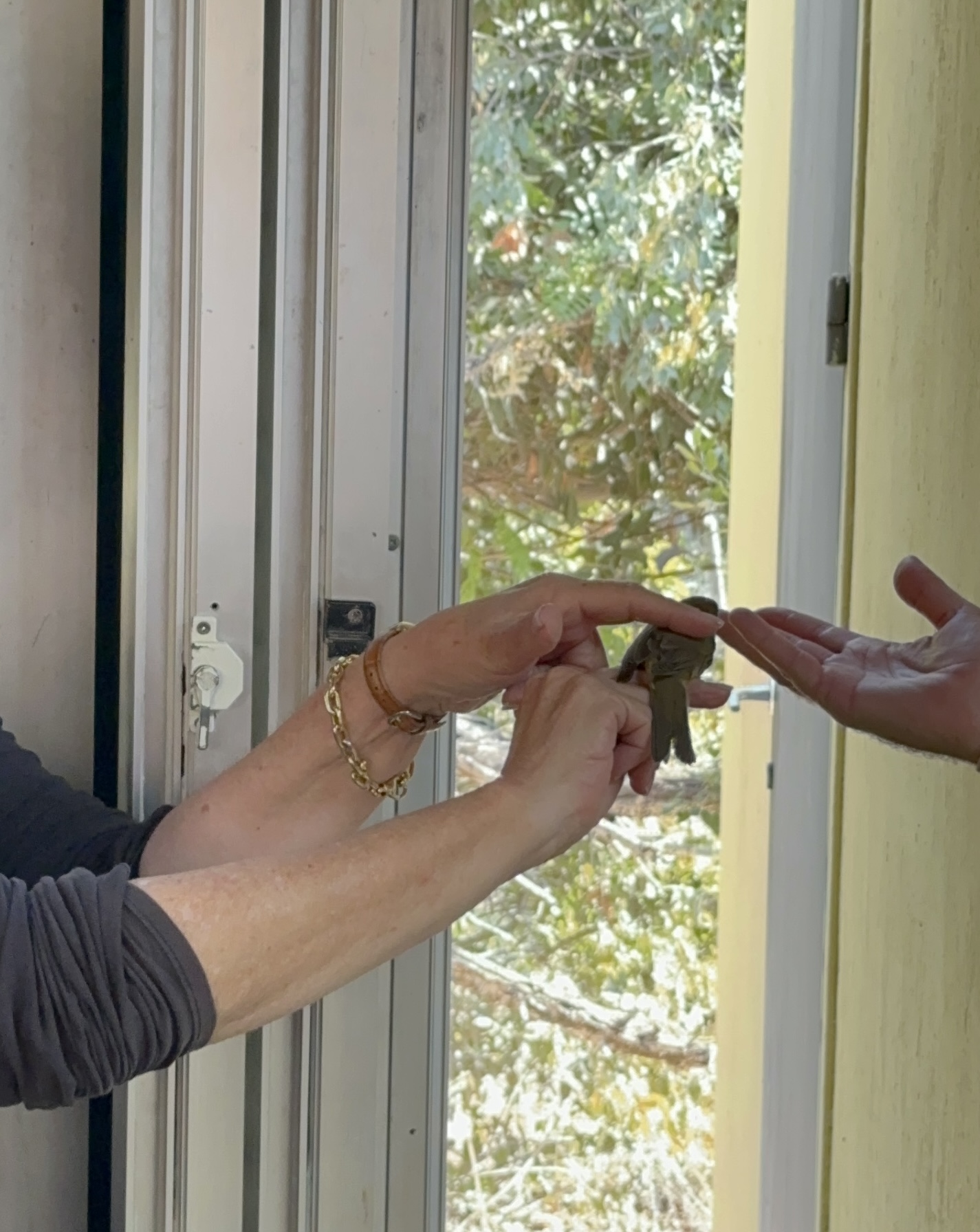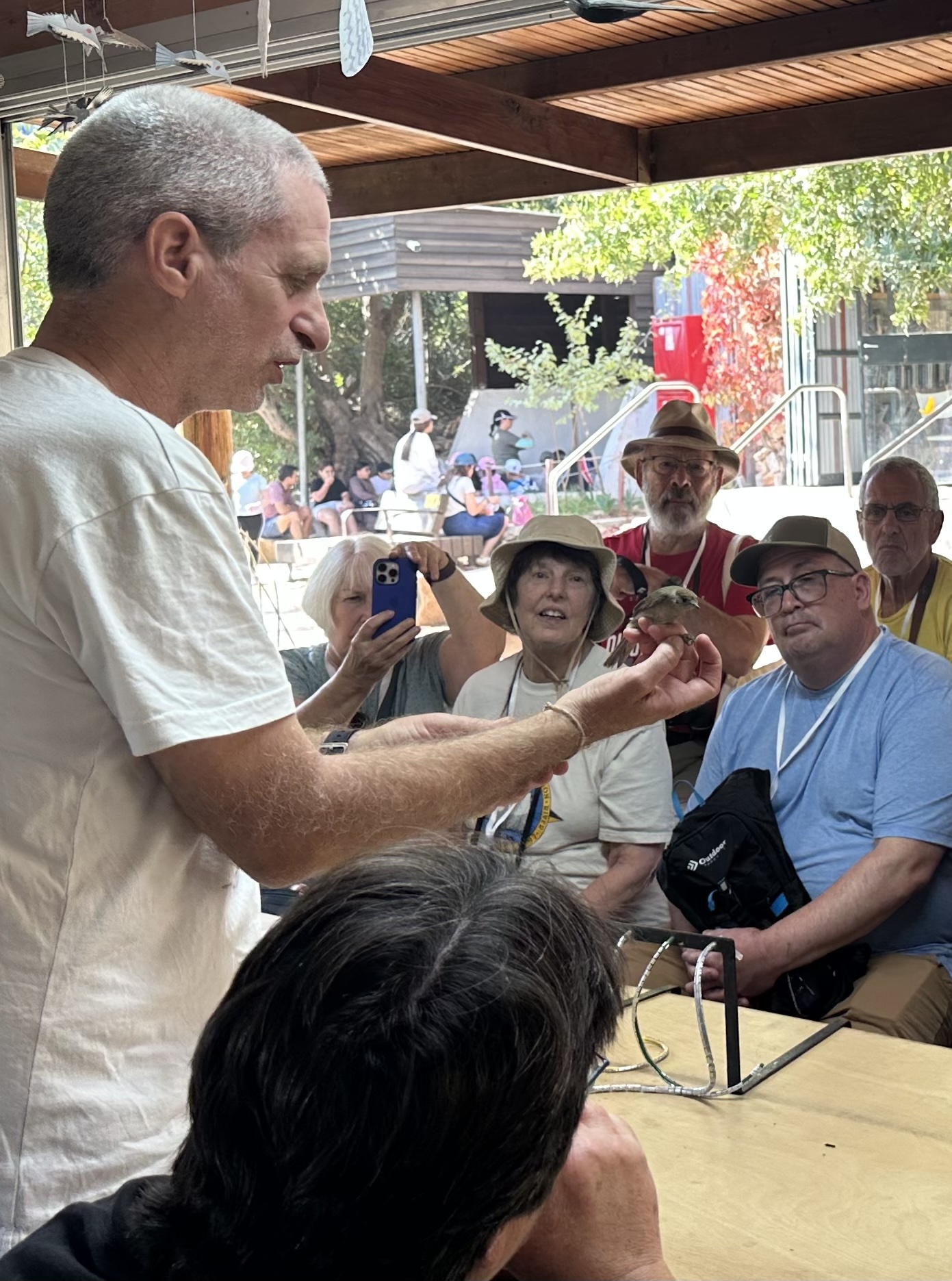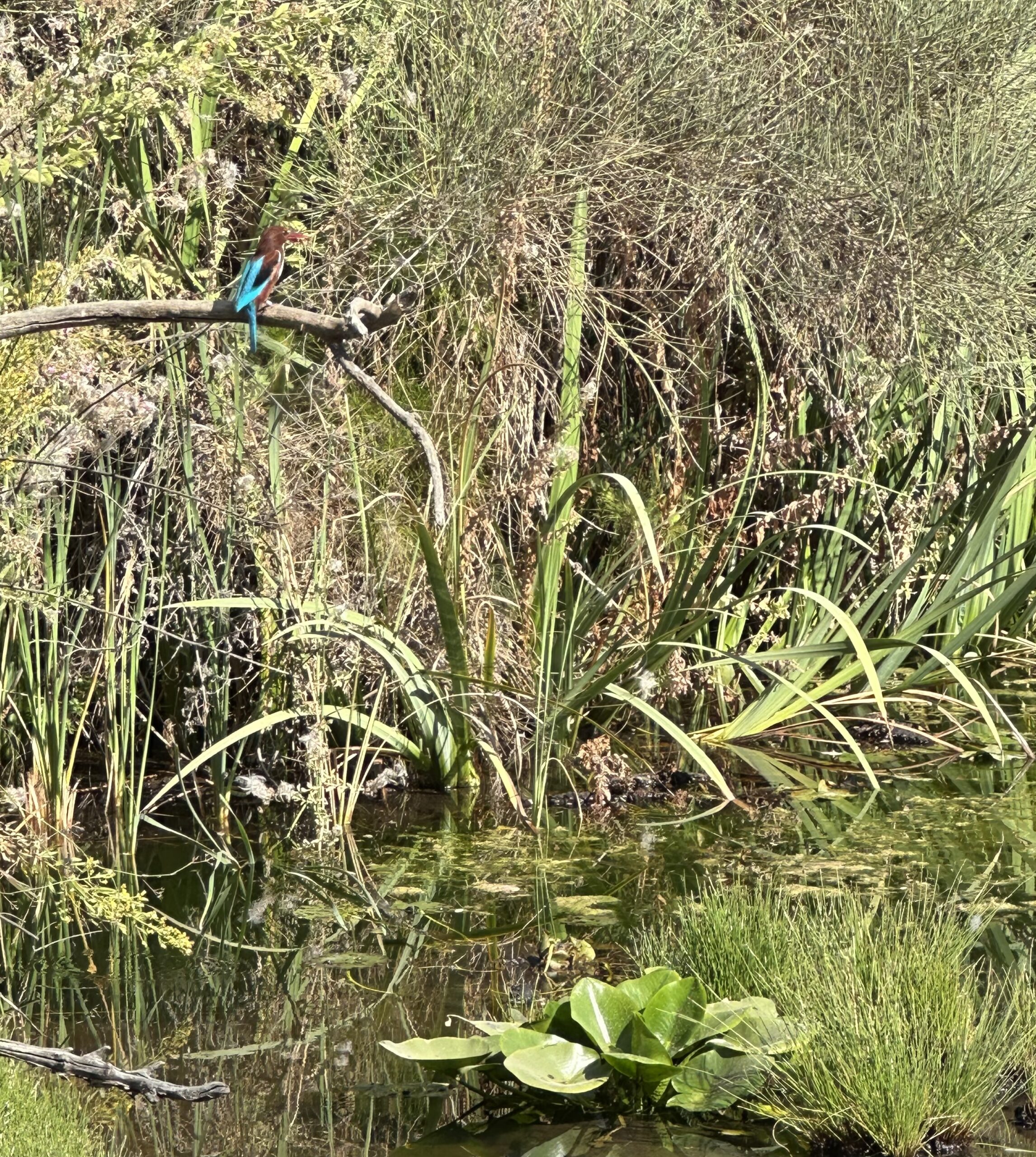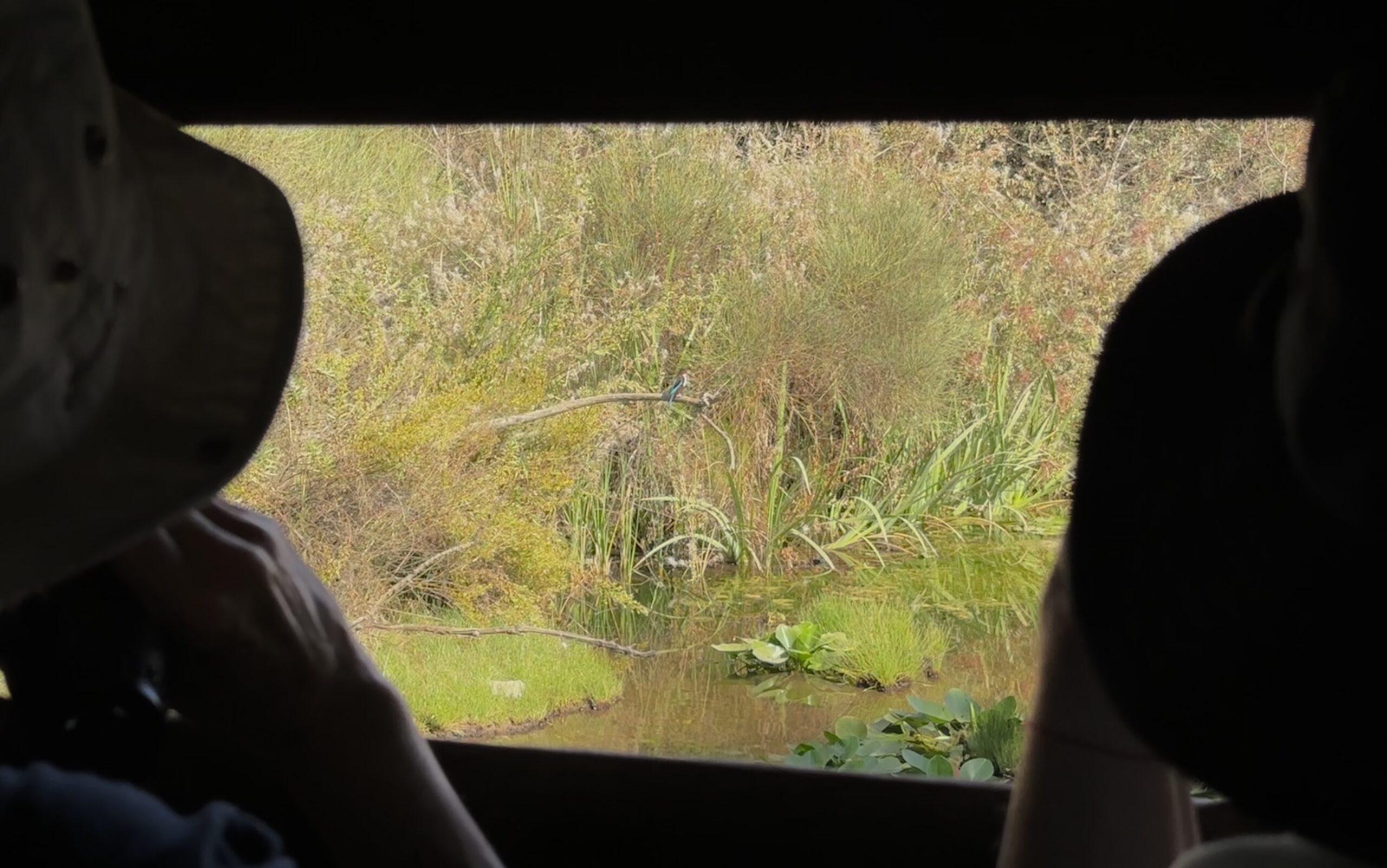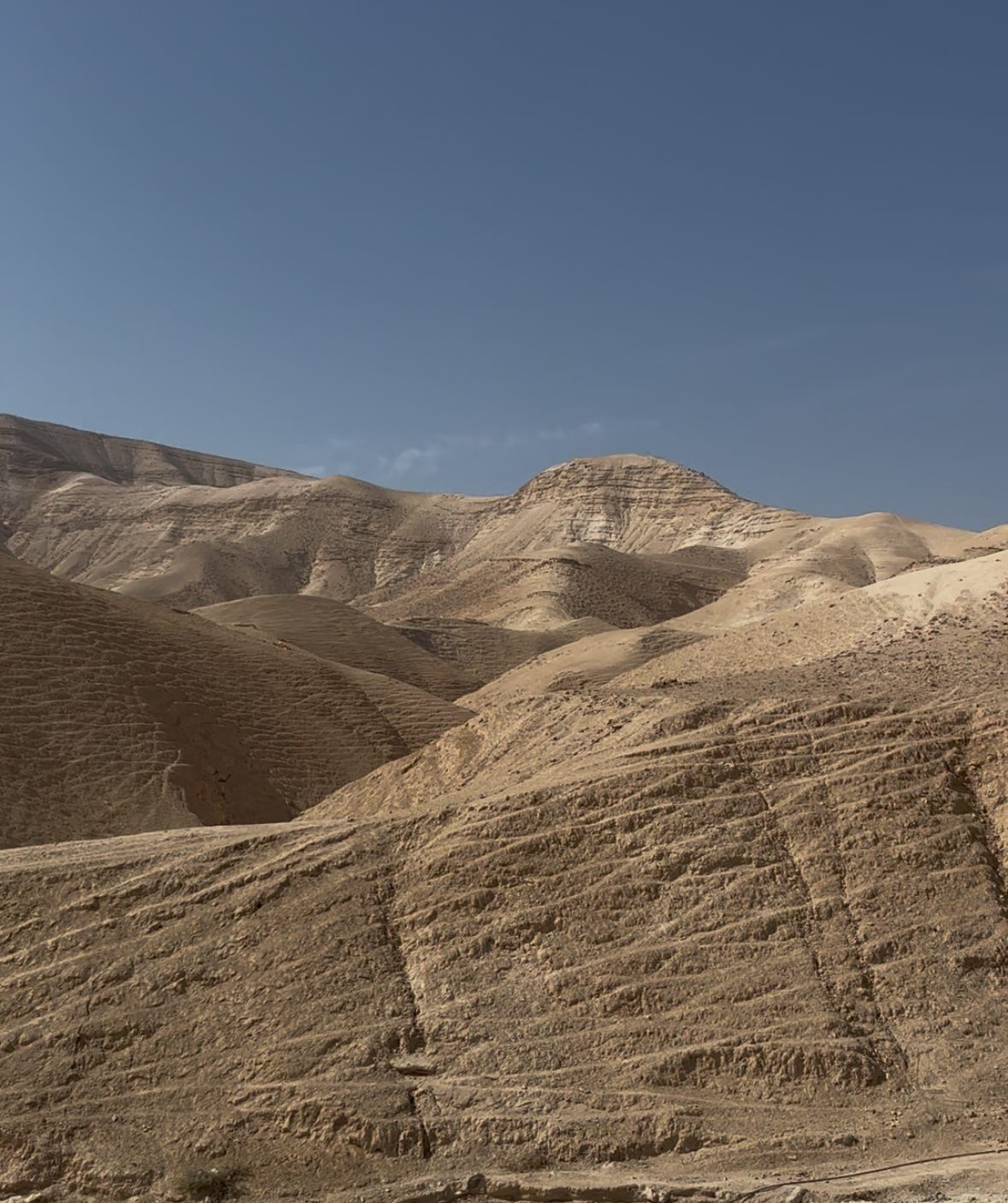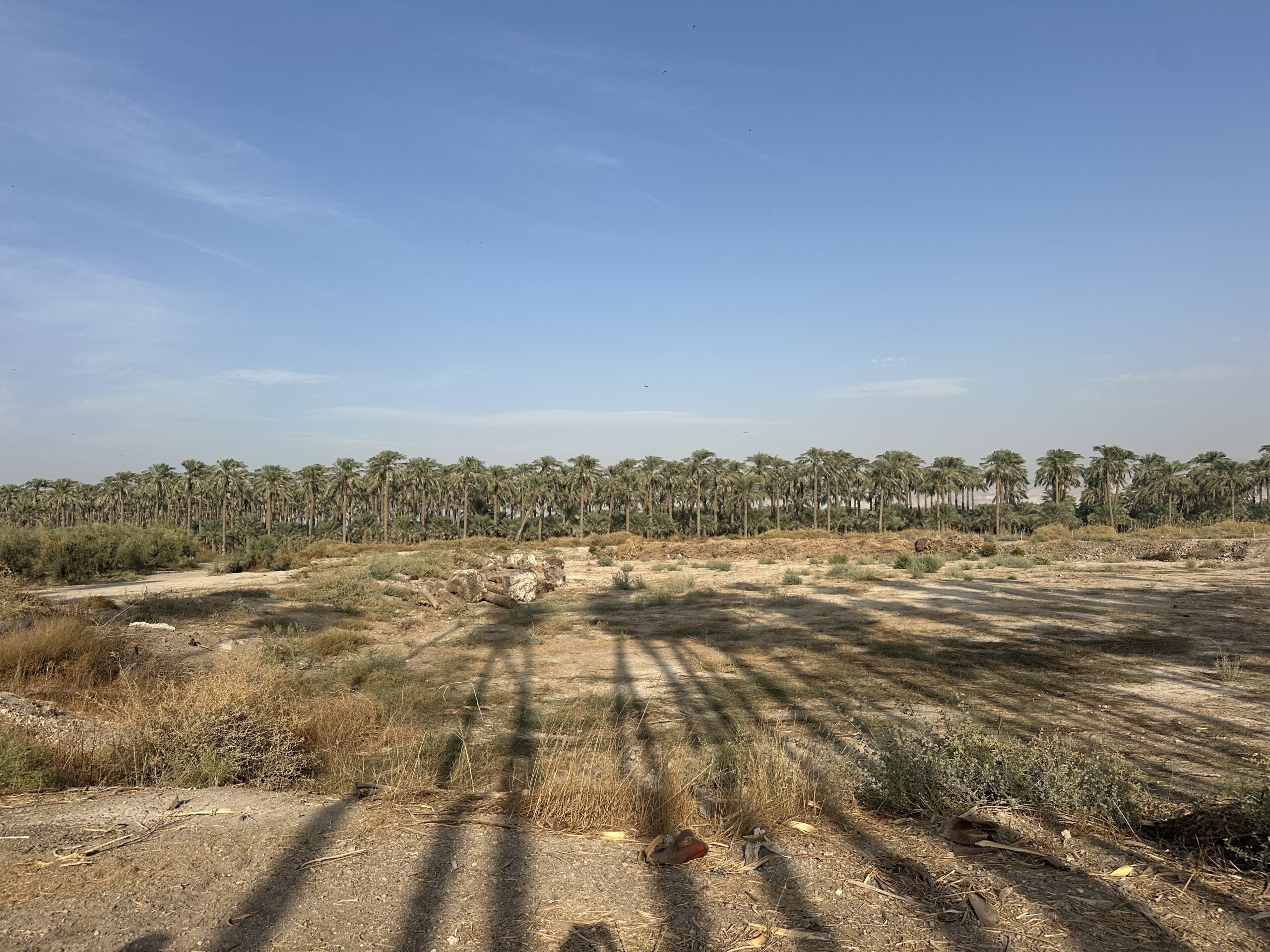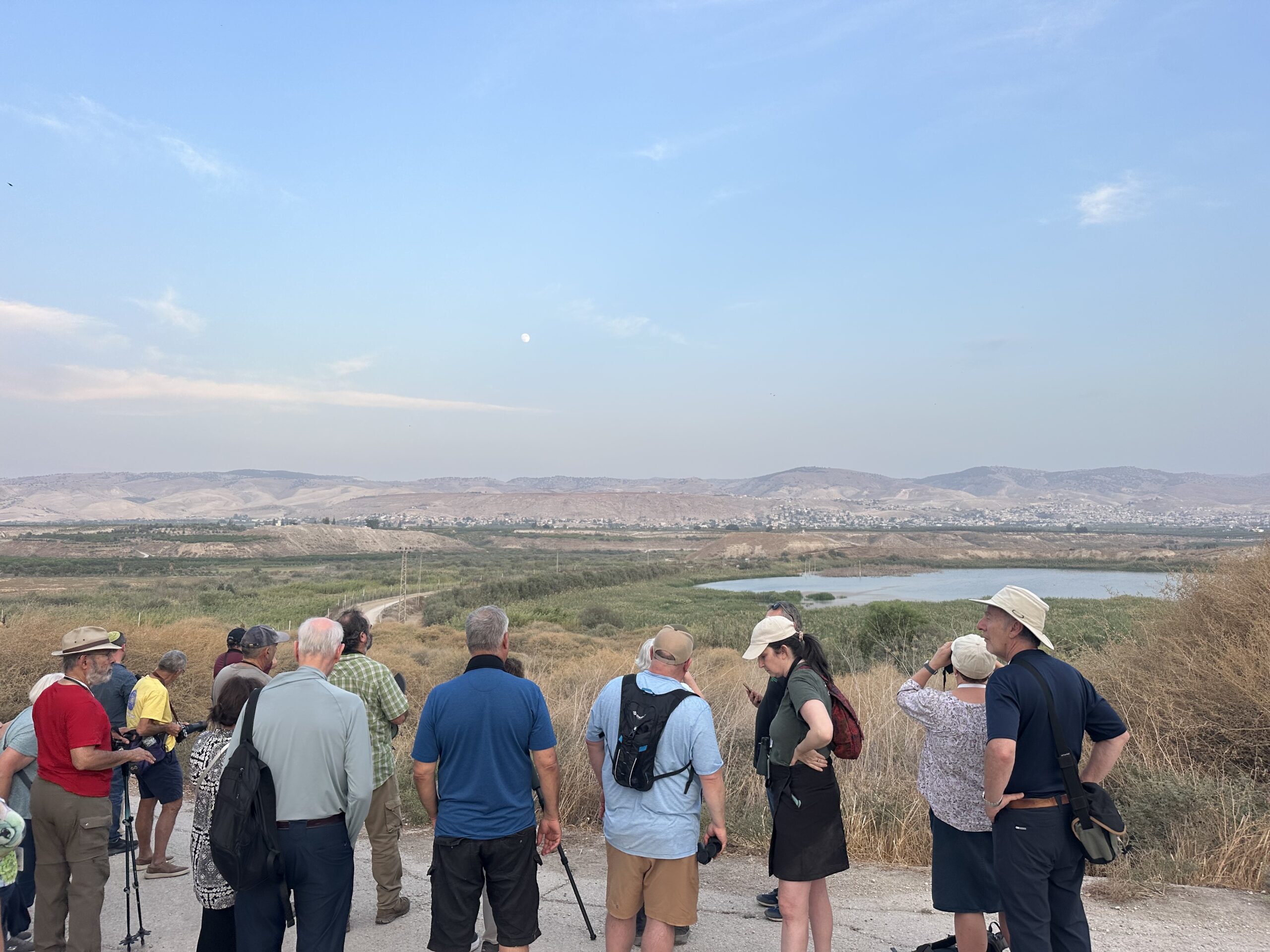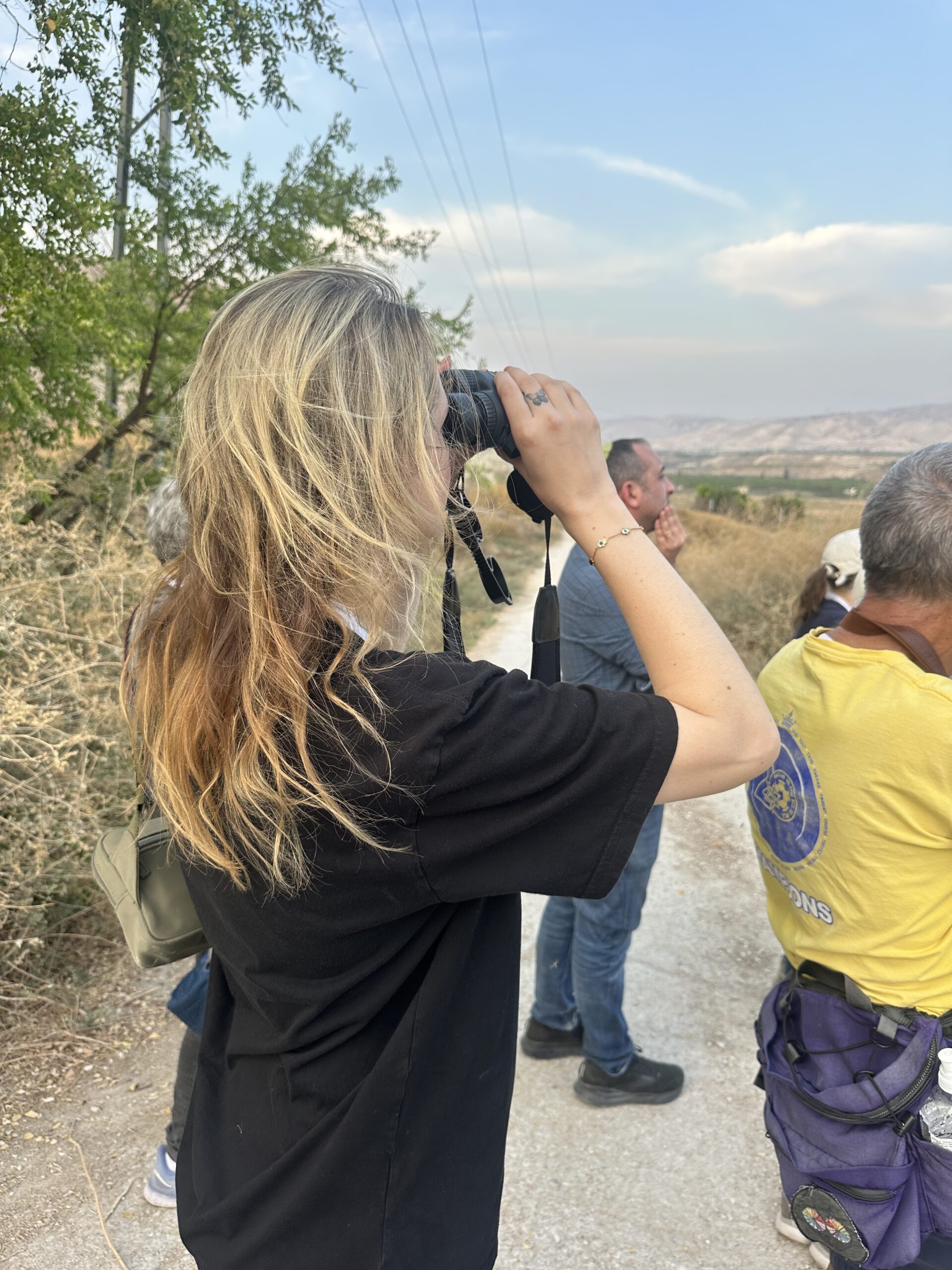
03 Nov November 3, 2025: Day 2
by Jessica Lewis, Director of Marketing and Communications at Nature Israel
Nili and David Jerusalem Bird Observatory
At the Nili and David Jerusalem Bird Observatory (JBO), we experienced bird banding up close at this acre-and-a-half oasis in the heart of the city, a vital stopover site for migratory birds and an educational hub visited by more than 50,000 children each year.
We were greeted by Dr. Yoav Perlman, SPNI’s Director of Science and Conservation, and Alen Kacal, former Director of the JBO. As we gathered under the shade, two classes of Israeli elementary school children filed in behind us, their laughter and excitement contageous. Yoav pointed out a young man named Gil, who was leading the students on their tour. Gil first came to the JBO as a nine-year-old, fell in love with birds, and now, after completing his military service, volunteers full-time, teaching the next generation of kids who stand where he once stood.
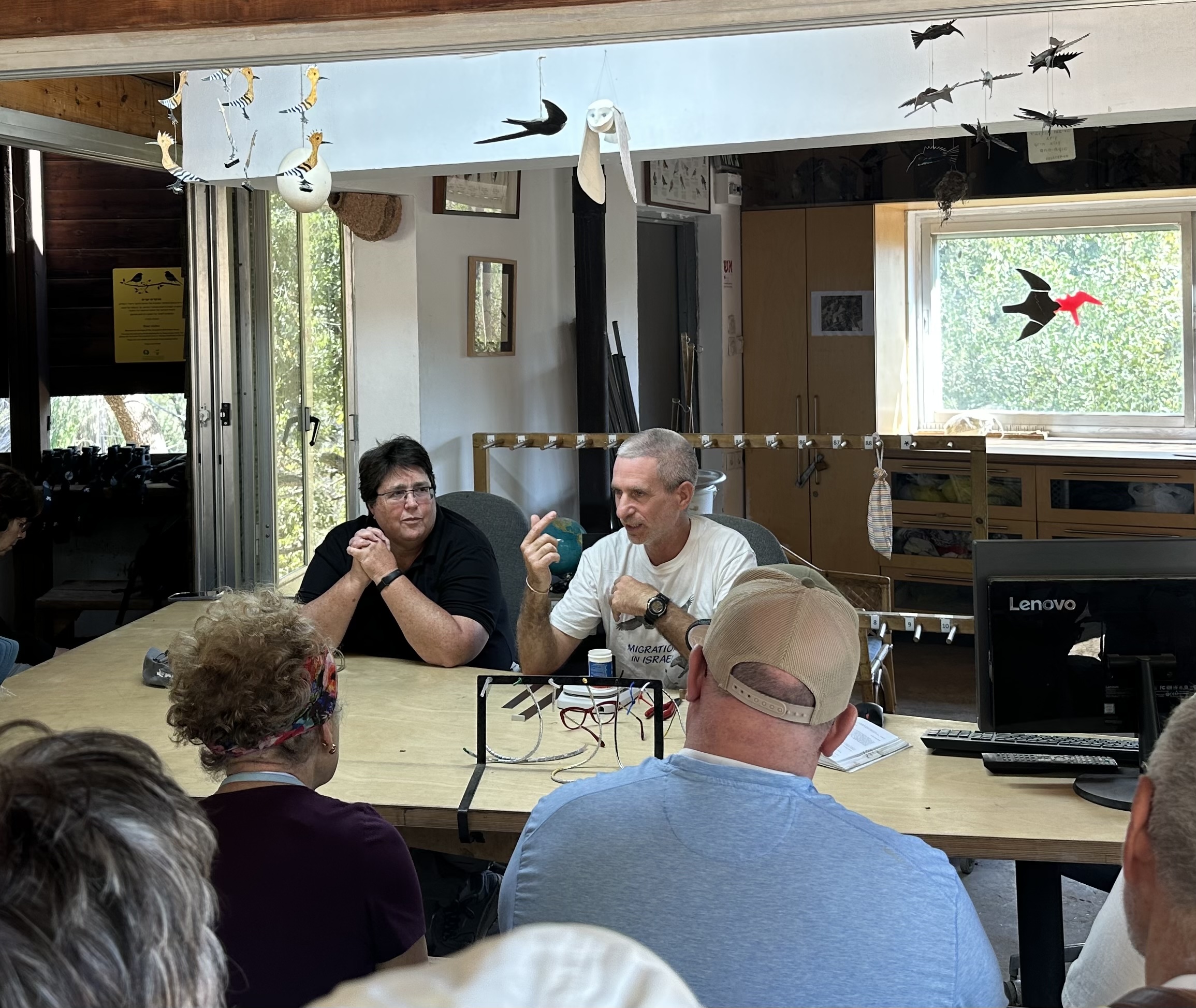
Yoav and Alen led us to the bird banding station, where Yoav explained the two sides of the JBO’s work. “One side is science: trying to understand the challenges migratory birds are facing for better conservation. The second side is outreach: working with all different age groups, ethnic groups, and gender groups of the area to teach them about birds and nature.” Then Yoav opened a small cloth bag and carefully pulled out a tiny Eurasian Blackcap. The bird fluttered lightly in his hand as he showed us how it’s measured and fitted with a small silver ring on its leg.
“These tiny birds fly through Israel at night,” he continued. “They face challenges like habitat loss and hunting,
“that’s why maintaining, protecting, and restoring good stopover sites like the JBO is so important, so at least when they leave here, they’re leaving in the best condition.”
After logging the details of this Eurasian Blackcap, Yoav gently passed the bird to trip participant Jeni, who who held and softly stroked its feathers for just a moment. When she went to release it, it lingered in her hand for a few quiet seconds before finally taking flight. It was a small, tender moment, watching Jeni help this tiny bird continue its journey, and seeing how the JBO’s essential work gives countless others the same chance.
We continued to the bird blind overlooking Nyman Pond, where a brilliant blue White-throated Kingfisher perched proudly on a branch. We watched it dive again and again, but sadly missing its catch. “He’s going to be demoted to a prince-fisher,” Jay joked.
As we walked on, Yoav showed us the fine nets used for bird banding, gentle traps that allow researchers to collect crucial data. Yoav explained how they track each net to understand what kind of vegetation the bird was near and likely eating.
“We’re always trying to improve our habitat to make it more accommodating for the birds, based on the data we collect.”
Bus Ride North
On the ride north toward Kfar Ruppin’s rewilded wetlands, Lawrence Kasmir, SPNI’s Deputy Director of Development, joined us and spoke about Israel’s leadership in solar energy. Nearly every home and apartment in the country uses solar power to heat water, he explained. SPNI is now promoting solar energy installations on warehouses, schools, and industrial buildings, expanding renewable energy beyond rooftops to entire communities.
As the bus continued north, Jay told us about Israel’s efforts to restore the Sea of Galilee and the Jordan River. Desalinated water is being pumped back into the Galilee to bring it to an ecologically balanced level. Once stabilized, the dam can be reopened to allow water to flow south into the Jordan River, a move many environmentalists believe is the only way to save the Dead Sea.
These are just two examples of how SPNI is shaping Israel’s environmental future. SPNI’s work touches nearly every part of Israeli life, proving that there are practical solutions and plans in place to continue protecting the environment.
Driving along the Jordan River, we spotted thousands of black kites spiraling outside the window. A kite is a type of raptor, Lawrence told us, when they migrate, they search for warm air currents, and once one finds a rising column of heat, the rest follow, climbing higher and higher together. We also saw a few great white pelicans gliding in formation on their migration journey as well.
Even from the road, the migration was mesmerizing, a breathtaking current of wings tracing invisible pathways through the sky as we made our way north toward the valley.
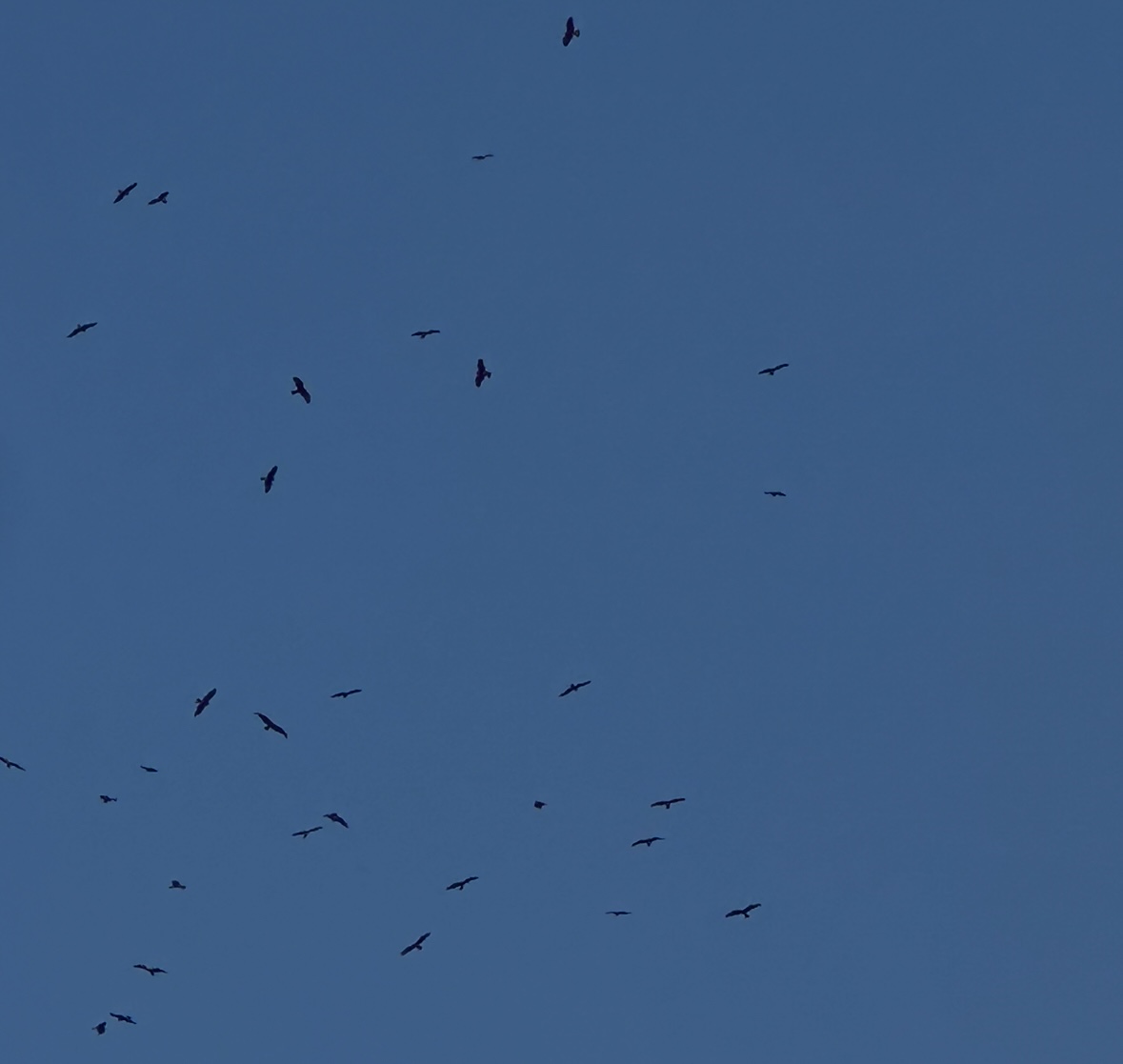
Kfar Ruppin Rewilded Wetlands
At Kfar Ruppin, we joined Dan Alon, CEO of SPNI, and Dr. Nadav Israeli, Director of SPNI’s Jordan Valley Birding Center, for a tour of Israel’s first rewilding project. Located along the Jordanian border, this site is part of SPNI’s innovative Start-Up Nature initiative, an ambitious effort to return agricultural land to thriving wetland ecosystems.
Our first stop was a drained fishpond, dusty, dry, and cracked, soon to be rewilded into a new wetland. Then we stopped at another site that had been restored five years earlier: a lush, living marsh alive with birds, dragonflies, and reeds swaying in the breeze. It felt like a bird hotel, with flocks constantly arriving, circling, landing, and taking off again.
Overhead, we spotted a short-toed eagle, rare for this time of year. Normally, Nadav explained, these European snake eagles spend the winter in Africa. But with changing climate patterns and more rodents active here during the winter, some are now staying in Israel year-round.
Nadav also told us there are around 100,000 black kites migrating over Israel each year — and 80,000 that now winter here. “Migrating birds don’t like to fly over the Mediterranean because there’s no thermal winds, and they don’t like to fly over the desert because there’s no place to eat or drink,” Dan explained,
“Israel’s narrow corridor makes it one of the most important flyways in the world—a small country with a global responsibility.”
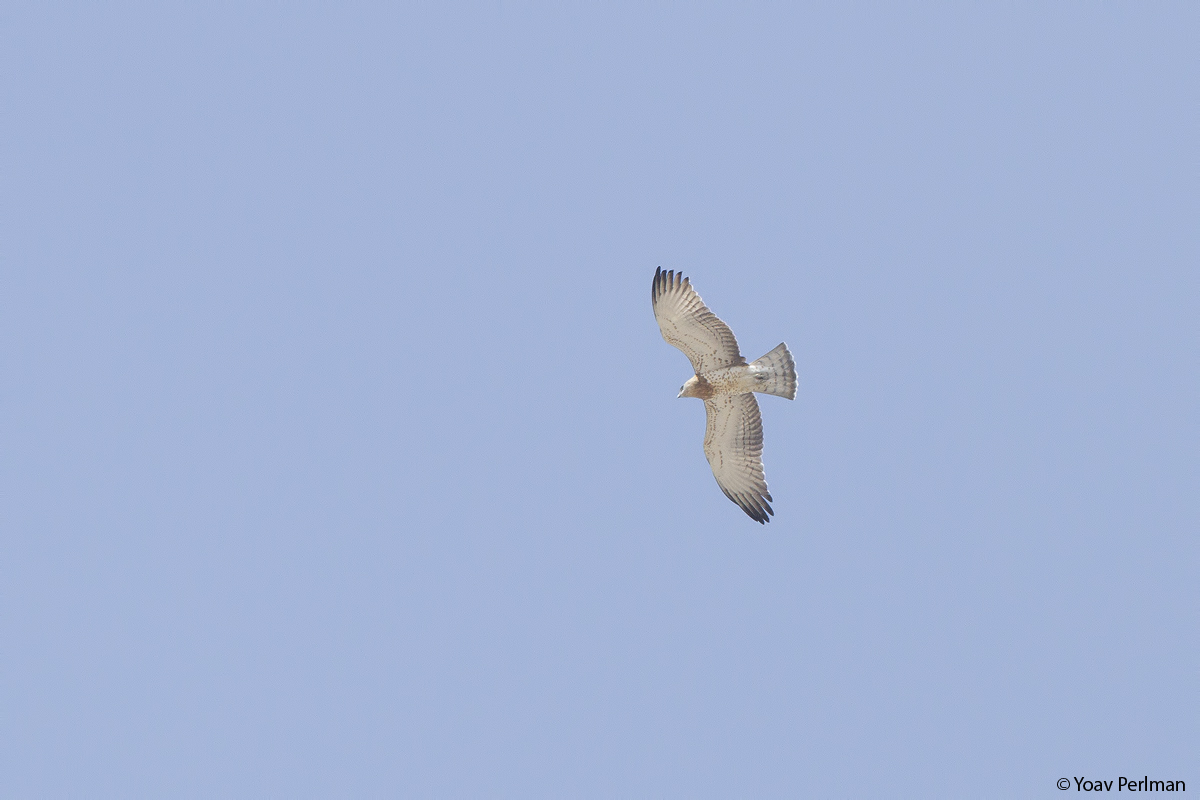
Along the path, we spotted wildflowers and dragonflies, one of the most ancient species on earth. They are key indicators of wetland health, Nadav explained, because they depend on clean water to lay their eggs and help control mosquito populations. We also saw marsh harriers, glossy ibis, starlings, herons, pygmy moorhens, and corn buntings. Aside from the birds, we learned that so many other species like otters, swamp cats, and even bats (13 to 15 species now live here) have returned, now thriving in habitats that didn’t exist before SPNI’s rewilding began.
As we looked out over the restored wetland, teeming with life, with the full moon rising overhead and highlighting the Israeli flag planted on a hill in the near distance, Rachel Canar turned to the group and said,
“I think this, bringing back and caring for the nature in Israel, is the kind of Zionism people can truly relate to.”




